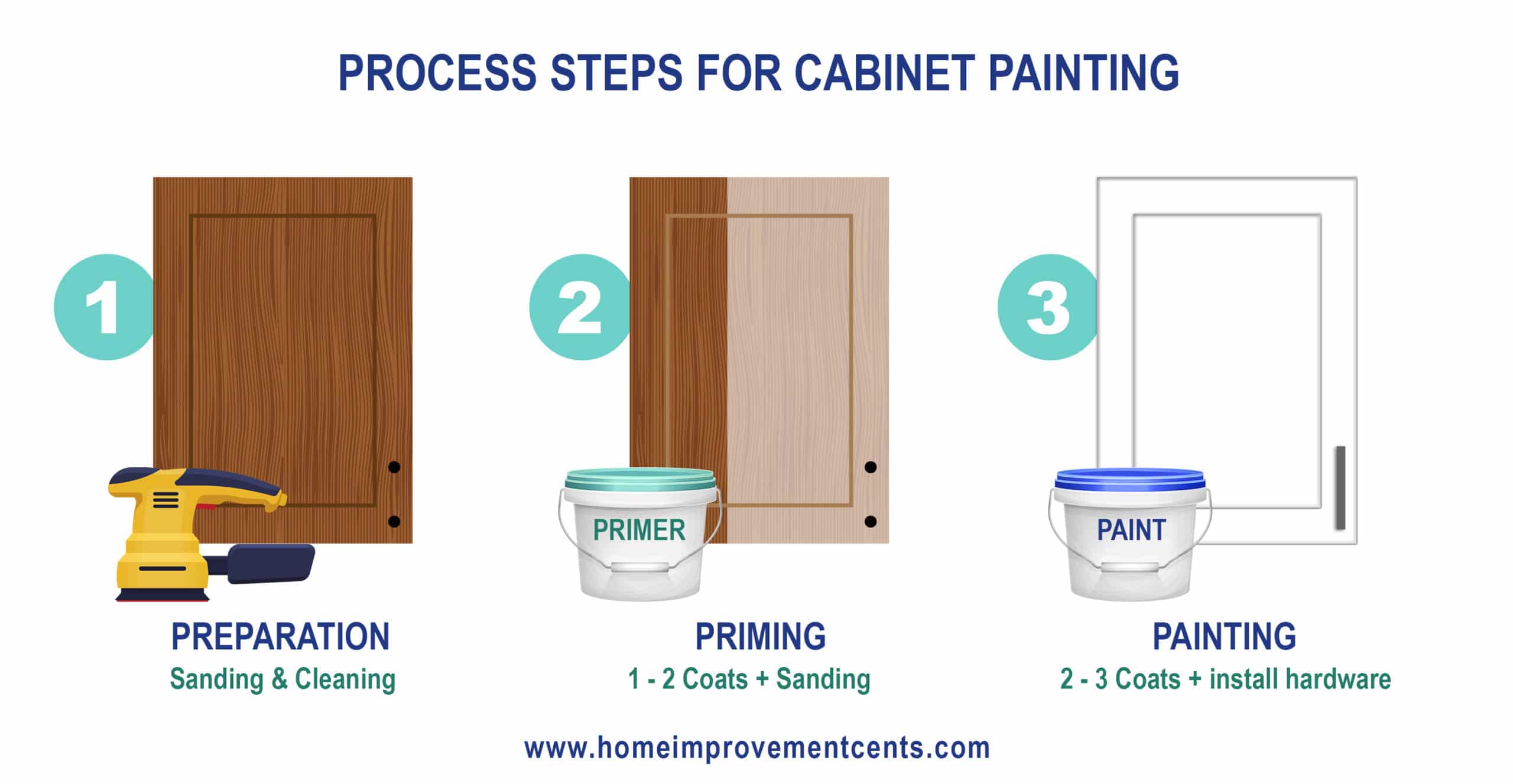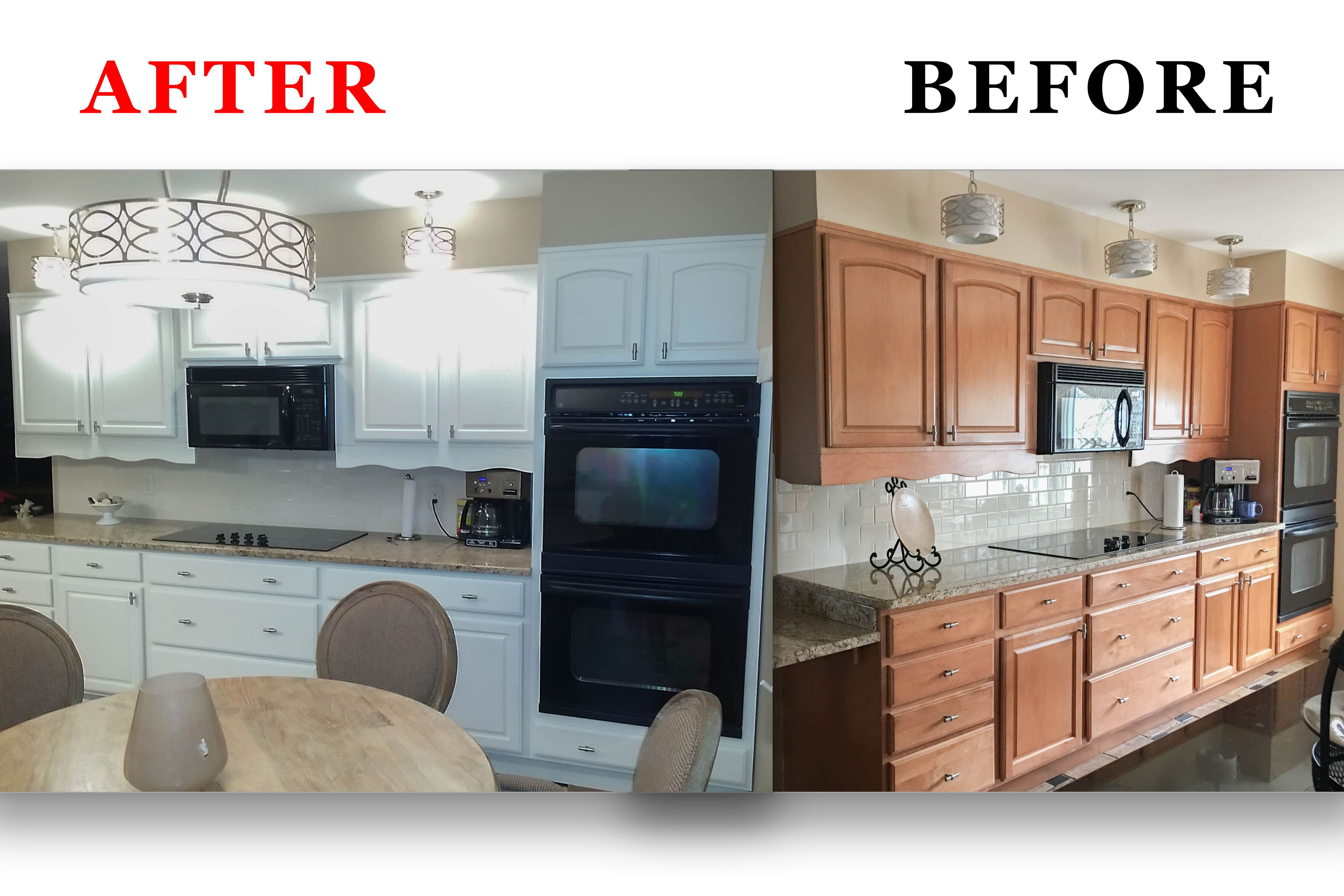Preparation & Planning

How to paint kitchen cabinets like a pro – Friends, embarking on a kitchen cabinet painting project is a transformative experience. It’s about more than just a fresh coat of paint; it’s about investing in the heart of your home, breathing new life into a space you use every day. But before we unleash our inner artists, meticulous preparation is key. This is where the magic truly begins – the foundation upon which a stunning, professional-looking finish rests.
Cabinet Preparation Steps
Proper preparation ensures a smooth, durable, and long-lasting paint job. This detailed guide breaks down the process into manageable steps, saving you time and frustration. Remember, patience is a virtue in this endeavor. Take your time, and the results will speak for themselves.
| Step | Materials | Description | Time Estimate |
|---|---|---|---|
| 1. Cleaning | TSP (trisodium phosphate), warm water, scrub brushes, rags, safety glasses, gloves | Thoroughly clean cabinets to remove grease, grime, and old finishes. Use TSP according to package directions, rinsing well. | 1-2 hours |
| 2. Repairing | Wood filler, putty knife, sandpaper | Fill any dents, holes, or cracks with wood filler, allowing it to dry completely before sanding smooth. | 30 minutes – 1 hour (plus drying time) |
| 3. Sanding | Sandpaper (various grits, 120-220 grit recommended), sanding block, tack cloth | Sand all surfaces lightly to create a smooth, even surface for better paint adhesion. Use finer grit sandpaper for a smoother finish. Remove dust with a tack cloth. | 1-2 hours |
| 4. Priming | Primer (oil-based or water-based, depending on paint choice), paint roller, brush, paint tray | Apply a high-quality primer to ensure even paint coverage and better adhesion. Allow primer to dry completely according to manufacturer’s instructions. | 1-2 hours (plus drying time) |
Paint Selection for Kitchen Cabinets
Choosing the right paint is paramount. Different paints offer varying levels of durability, finish, and application methods. Consider your lifestyle and desired aesthetic when making your selection.
- Oil-based Alkyd Enamel: Offers excellent durability, hardness, and resistance to moisture and stains. Provides a very smooth, high-gloss finish. Requires mineral spirits for cleanup and has a strong odor. Drying time is longer.
- Water-based Acrylic-Alkyd Enamel: Combines the best features of oil-based and water-based paints. Provides excellent durability, a smooth finish, and is easier to clean up with soap and water. Lower odor than oil-based.
- Water-based Acrylic Latex: Easy to clean up, low odor, and relatively quick drying time. Offers good durability, but may not be as resistant to moisture and scratches as enamel paints. Suitable for a variety of finishes, from matte to high-gloss.
Tools and Materials Checklist
Having all your tools and materials ready before you begin will streamline the process and prevent interruptions. This comprehensive checklist ensures you’re well-equipped for success.
- TSP (trisodium phosphate)
- Warm water
- Scrub brushes
- Rags
- Safety glasses
- Gloves
- Wood filler
- Putty knife
- Sandpaper (various grits)
- Sanding block
- Tack cloth
- Primer (oil-based or water-based)
- Cabinet paint (chosen type and color)
- Paint roller and tray
- Paint brushes (various sizes)
- Drop cloths
- Painter’s tape
- Clean rags or lint-free cloths
Painting Techniques & Application

Transforming your kitchen cabinets from drab to fab requires more than just picking the perfect paint color. Mastering the application techniques is key to achieving a professional, long-lasting finish. This section will equip you with the knowledge and skills to paint your cabinets like a true pro, resulting in a stunning kitchen makeover.
Cabinet Painting Process
The key to a flawless finish lies in a methodical approach. Each step builds upon the previous one, contributing to the overall quality and durability of your paint job. The following table Artikels the essential steps, offering valuable tips and highlighting potential pitfalls to avoid.
| Step | Tips for Success | Problems to Avoid |
|---|---|---|
| Preparation (Priming) | Apply a high-quality primer designed for cabinets. Ensure even coverage, paying close attention to any imperfections or bare wood. Allow ample drying time as specified by the manufacturer. | Uneven primer application leading to visible patches or streaks in the final coat. Insufficient drying time resulting in poor adhesion. |
| First Coat Application | Use long, smooth strokes in the same direction, working with the grain of the wood where applicable. Avoid overloading the brush or roller to prevent drips and runs. Focus on even coverage. | Heavy brushstrokes, uneven coverage, drips, runs, and roller marks. |
| Second Coat Application (and subsequent coats) | Allow sufficient drying time between coats (typically 2-4 hours depending on the paint and environmental conditions). Apply subsequent coats using the same technique as the first coat. Lightly sand between coats for a super-smooth finish (optional). | Applying coats too quickly before the previous coat is fully dry. Skipping sanding between coats leading to a less smooth finish. |
| Handling Tricky Areas | Use smaller brushes or detail brushes for corners, edges, and intricate details. Use painter’s tape strategically to protect adjacent surfaces. | Uneven paint coverage in corners and edges. Paint bleeding under painter’s tape. |
| Final Inspection & Cleanup | Thoroughly inspect the finished cabinets for any imperfections. Address any issues before the paint fully cures. Clean brushes and rollers immediately with appropriate solvents. | Ignoring minor imperfections that become more noticeable after the paint dries. Leaving paint to dry on brushes and rollers, making them unusable. |
Painting Methods: Brushes, Rollers, and Sprayers, How to paint kitchen cabinets like a pro
Choosing the right painting method significantly impacts the final result. Each method presents unique advantages and disadvantages.
The selection depends on factors such as the size of the project, your experience level, and the desired finish.
- Brushes: Offer excellent control and precision, ideal for detailed work and smaller projects. They are suitable for achieving a more textured finish.
- Rollers: Provide faster coverage for larger surfaces. They are best suited for achieving a smooth finish, but require more skill to avoid roller marks.
- Sprayers: Offer the fastest and most even coverage, particularly beneficial for large projects. They require more setup and cleanup but deliver a professional, factory-like finish. However, they require proper ventilation and safety precautions.
Achieving Various Paint Finishes
The choice of paint finish greatly influences the look and feel of your kitchen cabinets. Each finish offers a unique aesthetic and level of durability.
- Gloss: Provides a high-shine, durable finish that is easy to clean. It’s excellent for high-traffic areas but can show imperfections more readily. Requires a high-gloss paint and smooth application.
- Satin: Offers a subtle sheen with good durability and cleanability. It’s a popular choice for kitchens as it strikes a balance between shine and hiding imperfections. A satin paint is recommended.
- Matte/Flat: Provides a non-reflective, low-sheen finish that is excellent at hiding imperfections. It’s less durable and more challenging to clean than gloss or satin finishes. A flat or matte paint is necessary for this look.
Finishing Touches & Maintenance: How To Paint Kitchen Cabinets Like A Pro
The final stages of your kitchen cabinet painting project are crucial for achieving a truly professional and long-lasting finish. Proper sealing and ongoing maintenance will protect your investment and keep your cabinets looking their best for years to come. Let’s dive into the details to ensure your hard work shines.
Applying a protective clear coat is paramount. It seals in the paint, offering superior protection against scratches, moisture, and everyday wear and tear. Choosing the right sealant is key to a successful outcome.
Protective Clear Coat Application
Selecting the right clear coat is a critical step. Different types offer varying levels of durability and sheen. Consider these options carefully to match your desired aesthetic and the level of protection needed in your kitchen.
- Water-Based Polyurethane: This is a popular choice for its ease of application, low odor, and relatively quick drying time. It provides good protection and a clear finish. Ideal for most kitchens.
- Oil-Based Polyurethane: Offers superior durability and water resistance compared to water-based options. It’s more resistant to scratches and abrasions but has a stronger odor and longer drying time. A good choice for high-traffic areas or kitchens prone to spills.
- Acrylic Lacquer: This fast-drying option provides a very hard, durable finish with excellent gloss. It’s known for its smooth, professional look, but requires careful application to avoid runs and drips due to its quick drying time. Best suited for experienced painters.
Achieving a Flawless Finish
Even the most meticulous painting can encounter minor imperfections. Addressing these with the right techniques ensures a professional, smooth finish. Remember, attention to detail is everything at this stage.
- Sanding Between Coats: Lightly sanding between coats of paint and clear coat helps create a smoother, more even surface. Use fine-grit sandpaper (220-grit or higher) and sand gently in the direction of the wood grain. This removes any imperfections and allows for better adhesion of subsequent coats.
- Tack Cloth: Before applying each coat, use a tack cloth to remove any dust or debris from the cabinet surfaces. This prevents imperfections from being trapped in the finish.
- Thin Coats: Apply multiple thin coats rather than one thick coat. This prevents runs and drips and ensures even coverage. Allow each coat to dry completely before applying the next.
- Addressing Imperfections: For small imperfections like drips or runs, carefully sand them down after the paint has completely dried. Then, apply another thin coat of paint to blend the area seamlessly.
Painted Cabinet Maintenance
Regular cleaning and care will prolong the life and beauty of your newly painted cabinets. A little effort goes a long way in maintaining their pristine appearance. This table Artikels a simple cleaning schedule.
| Cleaning Method | Frequency |
|---|---|
| Wipe down with a damp microfiber cloth | Daily or as needed |
| Mild dish soap and water solution (avoid harsh chemicals) | Weekly |
| Baking soda paste for stubborn stains (apply gently) | Monthly or as needed |
| Full cleaning with appropriate cleaner (check product instructions) | Quarterly or as needed |
